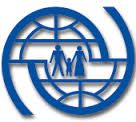Communities Vulnerable to Human Trafficking: Migrants
 This is the first of a three part blog series on communities vulnerable to human trafficking and currently migrants represent the largest susceptible population. Due to an estimated 232 million international migrants living abroad, migration has become a very important topic in the international community. While the definition of migrant varies by international organization, the International Organization of Migration defines a migrant as a person whose decision to migrate was taken freely….without intervention of an external compelling factor. For the sake of this blog, migrants will not include refugees or those displaced by civil conflicts; only those who chose to move to another country to better their social or economic situation for themselves or their family.
This is the first of a three part blog series on communities vulnerable to human trafficking and currently migrants represent the largest susceptible population. Due to an estimated 232 million international migrants living abroad, migration has become a very important topic in the international community. While the definition of migrant varies by international organization, the International Organization of Migration defines a migrant as a person whose decision to migrate was taken freely….without intervention of an external compelling factor. For the sake of this blog, migrants will not include refugees or those displaced by civil conflicts; only those who chose to move to another country to better their social or economic situation for themselves or their family.
Female Migrants and Human Trafficking
The United Nations Population Fund explains that women now make up the majority of international migrants. The UNFPA estimates that in some countries women migrants make up as much as 70-80 percent of the total migrant population. Women migrants are especially prone to human trafficking since the positions they tend to seek take place in private and hidden environments such as domestic work in family homes and undocumented factories. Migrants expecting humane working conditions too many times find themselves trapped in slave labor or indentured servitude. There is also the increasing problem of women migrating for the promise of good jobs in restaurants or hotels only to end up tricked into sex slavery. This is a growing concern for migrants from Mexico and Central America coerced into sex trafficking in the United States.
Undocumented Migrants and Human Trafficking
Not all migrants have the means to enter a country legally and must turn to smugglers to get them into their destination country. Due to the clandestine and illegal nature of smuggling people across borders, migrants are vulnerable to abuse and exploitation by the smugglers. All too often smuggling becomes trafficking when the undocumented migrants are coerced into forced labor or sex slavery once they reach their country of destination. Undocumented migrants are especially vulnerable to human trafficking due to their weak legal status, poor language skills and low socio-economic conditions. Mexican farm workers in the USA, Burmese unskilled laborers in Thailand and Ethiopian domestic workers in Saudi Arabia are examples of types of undocumented migrant workers who might face these types of hardships. International migrants make up 3 percent of the world’s population and as that number has continued to grow, so has the intersection between human trafficking and migration, especially within the female and undocumented populations.
